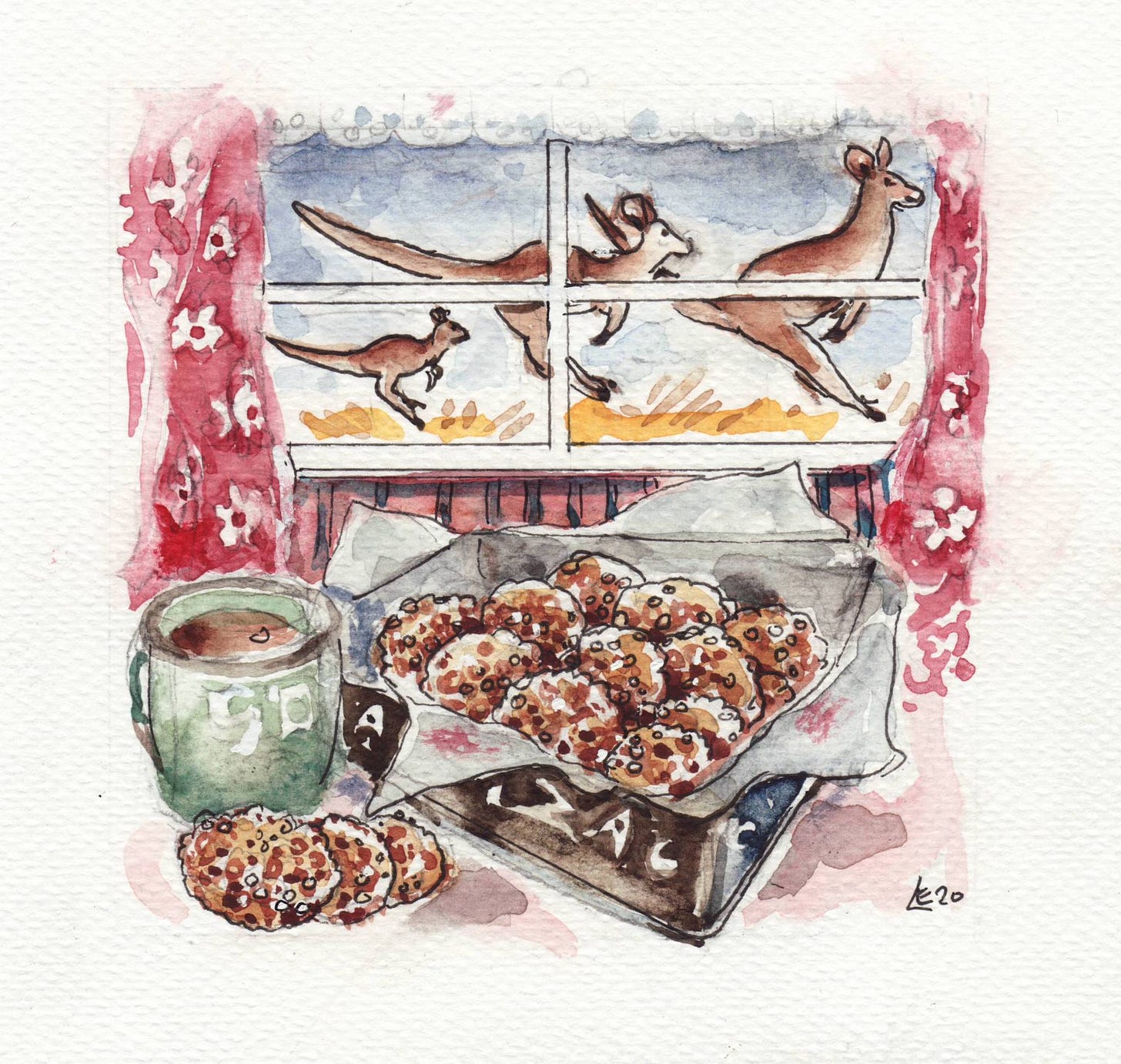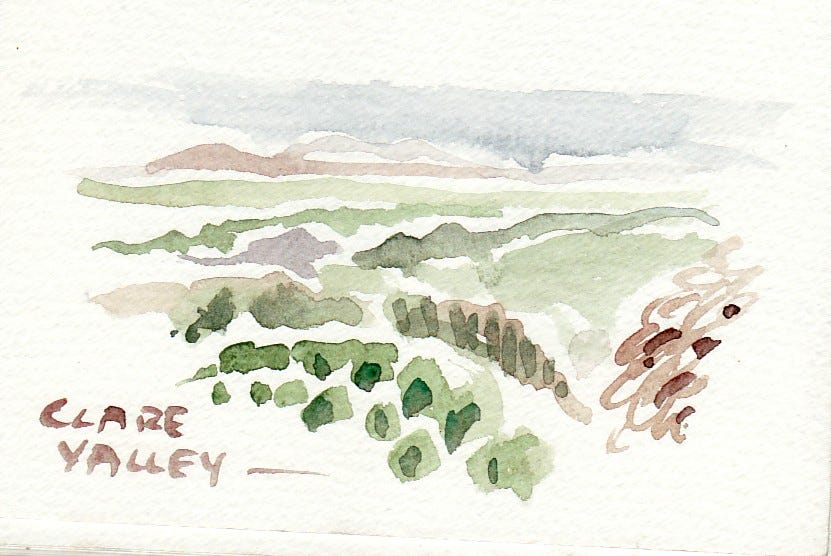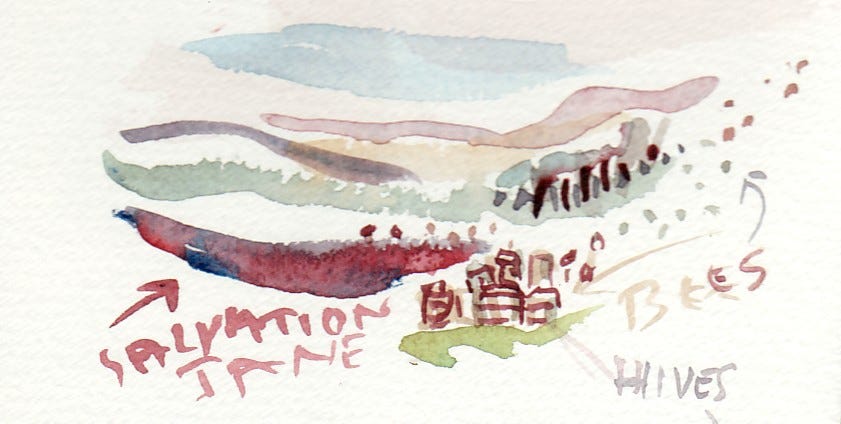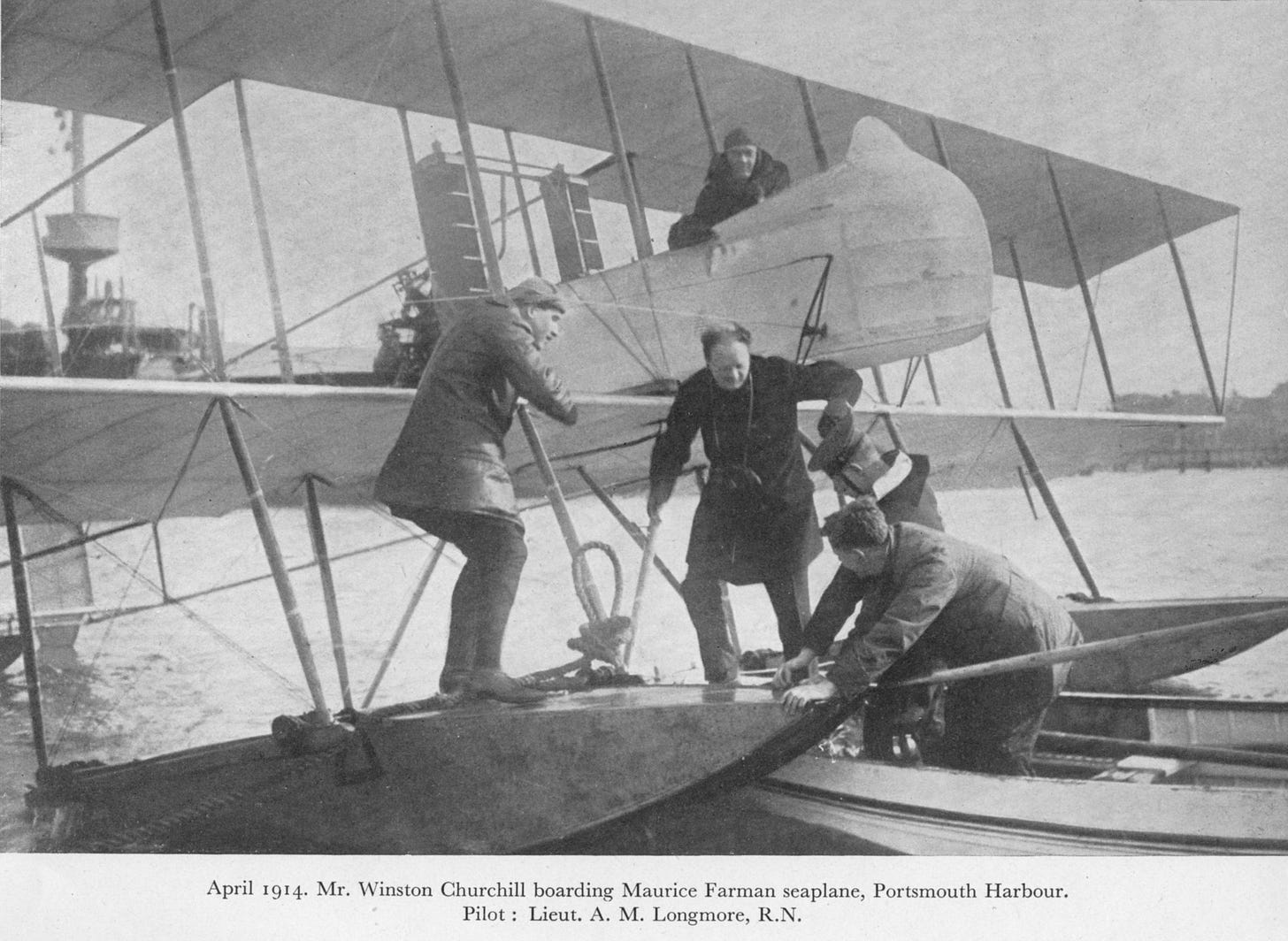Anzac biscuits, an early version of the energy bar, were sent to soldiers from Oz and New Zealand waiting offshore in the Dardanelles during WW1 by wives and mothers left at home. The disaster that was the Battle of Gallipoli has never forgotten, as I learned when travelling in the Clare Valley north of Adelaide shortly after the appearance of Mel Gibson in the title role of the movie. Limey was not an expression of affection then - or possibly ever - so I quickly learned to claim Scots ancestry to mitigate my undeniably English accent.
That said, as a member of that happy band of citizens of mongrel descent, I have skin in the game. My paternal granddad was born on a sheep-station to the south of Sydney in the late 1890’s. Proof of this is to found in a sepia-tinted photograph in the family album of a young boy with his mother, née Miss Murray of Edinburgh, standing in full Victorian splendour on the verandah of a tin-roofed shack surrounded by dry brush and a notable absence of sheep. By 1910, mother and son, following a scandal involving great-granny and the birth of twins of uncertain provenance, were back in Edinburgh without the appropriate husband and father.
Scandal indeed. At 14, possibly but necessarily because of the scandal (family skeletons were kept firmly in attics) granddad enlisted in the Royal Navy at the age of 14 - he lied about his age. When war broke out in 1914, he was volunteered (navy-speak for no-argument) as one of the first dozen or so recruits for the Royal Naval Air Service, forerunner of the RAF. By the time of the disaster that was the Battle of Gallipoli happened, Winston Churchill’s least-finest hour, grandad was flying string-and-balsawood reconnaissance planes over the trenches and, it’s fair to assume, in other war-zones as well. Below is my granddad with Winston Churchill testing out a new sea-plane prior to use in the Dardanelles.
Anzac biscuits
Crisp, buttery oatmeal cookies as prepared by wives of the Australian and New Zealand Army Corps to supplement meagre army rations during WW1. the measurement is in cups and spoofuls (a practical idea as there’s no need for scales) and an ordinary coffee-mug will do just fine.
Makes a dozen
1 cup rolled oats
1/2 cup shredded coconut
1 cup plain or wholemeal flour
1/2 cup soft brown sugar
1/2 teaspoon baking powder (or soda-water)
2 tablespoons boiling water
1/2 cup butter, melted
1 tablespoon golden syrup or treacle or honey
Sift the dry ingredients - oats, flour, sugar, coconut - together in a roomy bowl. Melt the butter with the syrup or honey. Mix the baking powder with the boiling water and add the melted butter. Fold in the dry ingredients thoroughly with a metal spoon (the mixture should hold its shape but not be runny). Drop a dozen blobs from a teaspoon onto a buttered baking-tray, leaving space for expansion all round, and flatten the tops with the back of a wetted spoon. Bake in a moderate oven - 325F/170C/gas3 - for 30-40 minutes, until golden and cooked right through. Transfer gently to a cake-rack - they'll crisp as they cool - and store in a tin when perfectly cool. They'll soften after a week or two, but you can crisp them up again in the oven.
p.s. Beloved paid subscribers (you keep me happily trucking on!) will shortly be in receipt of a recipe for Lamingtons (teatime in the Governor’s residence) and a few random notes on bush-tucker, including how not to get bitten by a wichitty grub.
p.p.s. More on travels in Oz and elsewhere in my newest memoir-with-recipes, Squirrel Pie and Other Stories (Bloomsbury).










This is the second recipe I’ve seen this week—and the first I’ve heard of these biscuits. It must be a sign to get baking!
Beautiful watercolors Elisabeth!